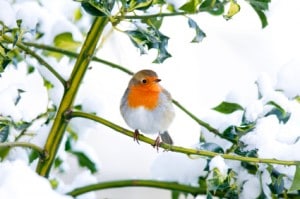 If you’re like me, you love finding out how Christmas is celebrated in different countries and how it was celebrated in different periods of history.
If you’re like me, you love finding out how Christmas is celebrated in different countries and how it was celebrated in different periods of history.
Well, you can read a full rundown on Tudor Christmas traditions on our “Tudor Christmas” page, but I’ve just been watching the Christmas episode of “Tales from the Green Valley” which was a series about a group of historians taking over a farm and running it as if it was in the 1620s. OK, so it’s in Stuart times, but not much had changed as far as Christmas traditions were concerned, and I just wanted to share with you how they celebrated Christmas in the episode:-
- The Mince Pie – I make mince pies with homemade mincemeat ( a mixture of dried fruit, suet, spices and orange/lemon peel) and pastry, but in Tudor and Stuart times the mince pie was a big pie made with meat, spices and dried fruit. In the Christmas episode of “Tales from the Green Valley”, Ruth makes her mince pie with trimmings from the beef which Chloe is preparing for their Christmas roast dinner, spices such as mace, raisins, currants and dried figs. Mince pies could also be made with mutton, goose or veal. Click here for a traditional 17th century recipe for Mince Pie.
The famous Tudor Christmas Pie was a coffin shaped pie crust containing a turkey stuffed with a goose which was stuffed with a chicken which was stuffed with a partridge which was stuffed with a pigeon!
- The Roast – In the UK, we tend to eat roast turkey at our Christmas dinner, but, in Tudor times, you were more likely to eat goose or beef, if you were well off. In this episode, the historians enjoy roast beef which has been cooked in front of the fire on a spit, basted continually and dredged with breadcrumbs so that a crust builds up to seal inthe juices – yum!
- Decorating the house – Obviously, the Christmas tree came became a Christmas tradition in the UK in Victorian times, but people decorated their houses in Tudor and Stuart times. We have to remember that December, mid winter, was a pretty miserable time for rural, everyday people, so it was good to brighten up the house by bringing in things like holly, ivy, rosemary and bay.
- The Yule Log – This tradition dates back to Tudor times, although it probably has its roots in Viking traditions. The men of the house would find a huge log and bring it into the home to burn throughout the 12 days of Christmas. It was a central part of the Christmas festivities, as the family would gather around the hearth, and the men bringing in the log would be welcomed with hot spiced ale by the women of the house.
- Lambswool – Ruth made this traditional wassail drink in the programme with ale and apples and placed it near the fire to warm. Click here for a recipe for Lambswool.
- Marchpane – In the programme, they made a decorative marchpane centrepiece with almonds and sugar (marzipan). They shaped it into a pig’s head and placed an apple in its mouth.
What we have to remember is that the 12 days of Christmas was an important time for rural Tudor and Stuart people, it was 12 days of holiday, feasting and merry making for them, and was a bright spot in the miserable, cold midwinter. Obviously, it was a religious festival, which marked the birth of Christ, but this was mixed in with the traditional Pagan festival which celebrated the Winter Solstice and rebirth – Spring was on its way!
You can find out more about the many traditions of the Tudor Christmas on our Tudor Christmas” page and also the Elizabethan Christmas over at The Elizabeth Files.
Source
- Tales from the Green Valley – UK DVD. You can see a clip of this wonderful series at http://www.youtube.com/watch?v=RxtbCufq58U